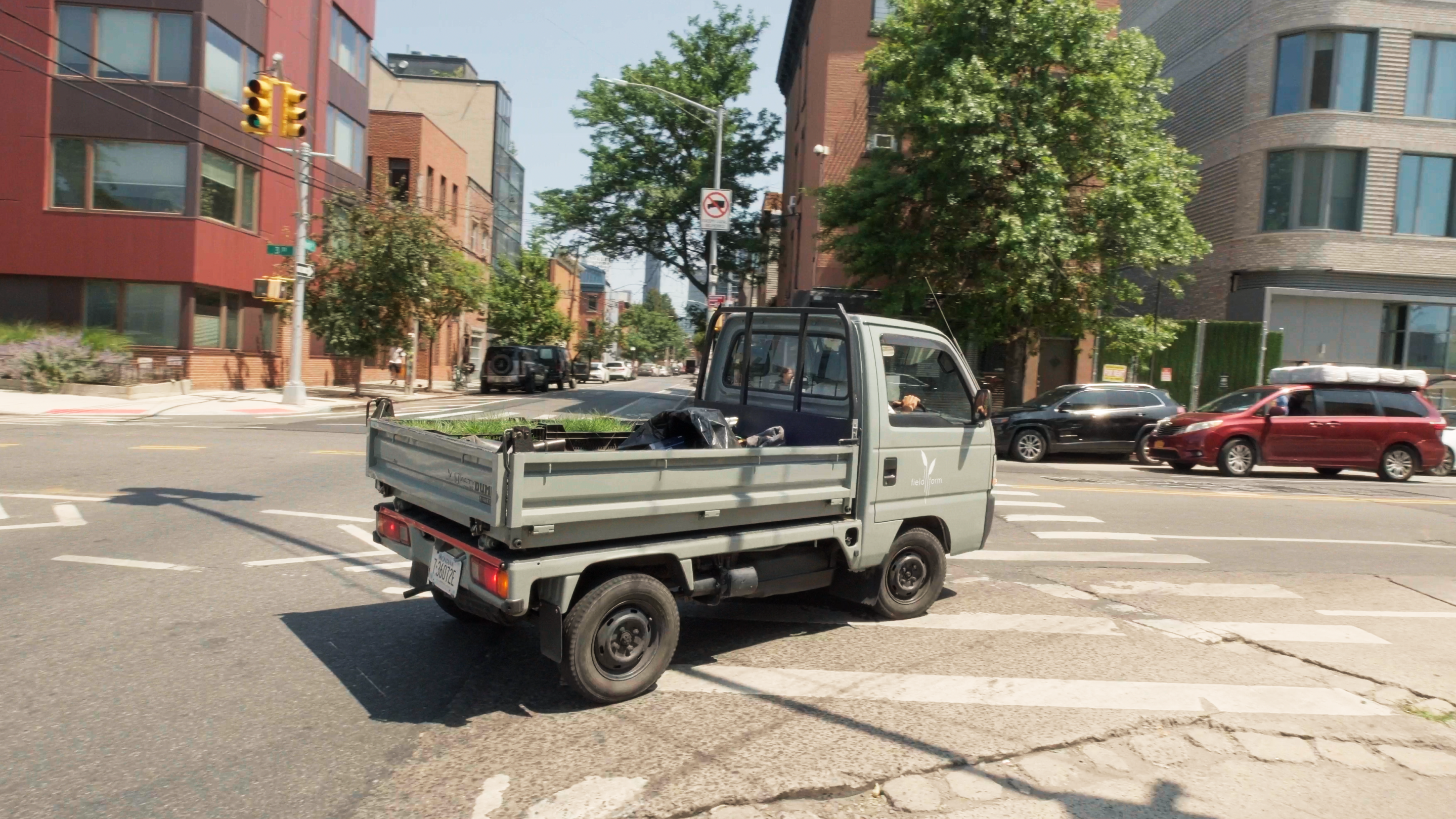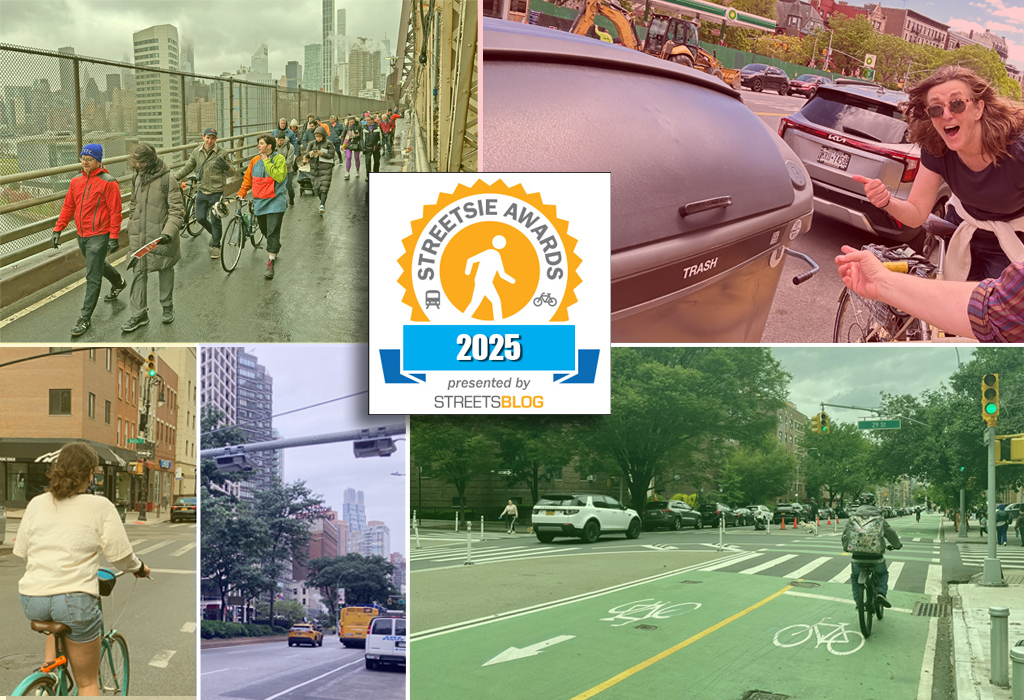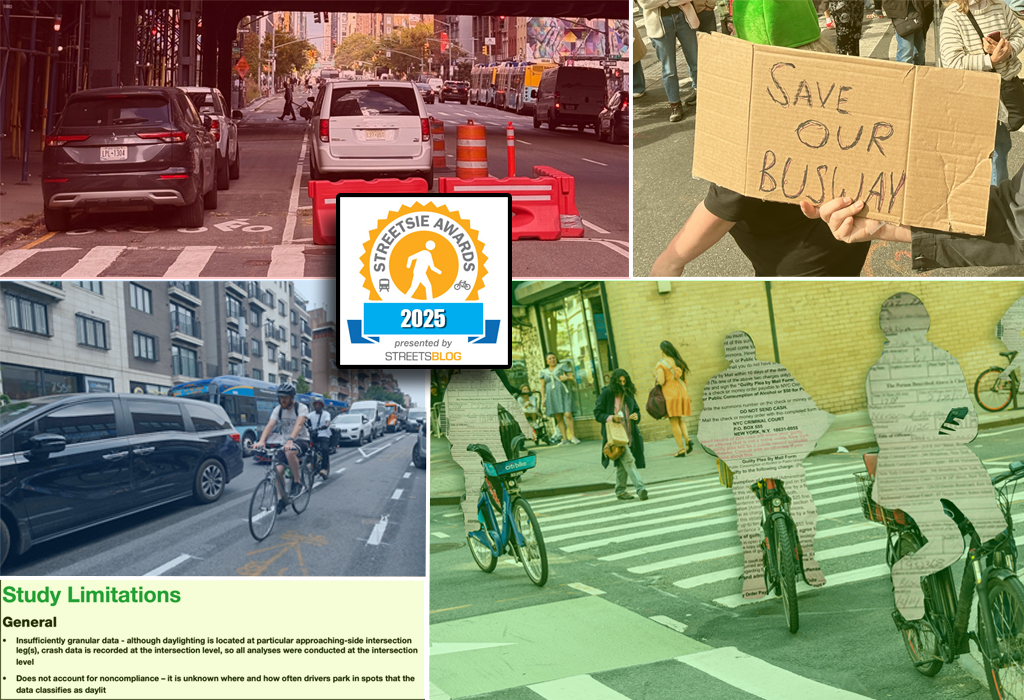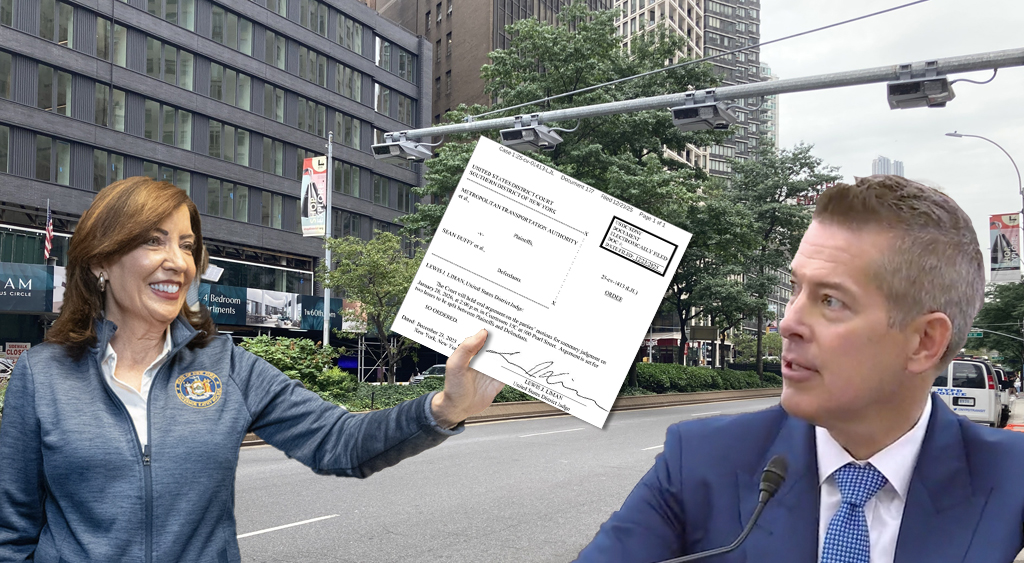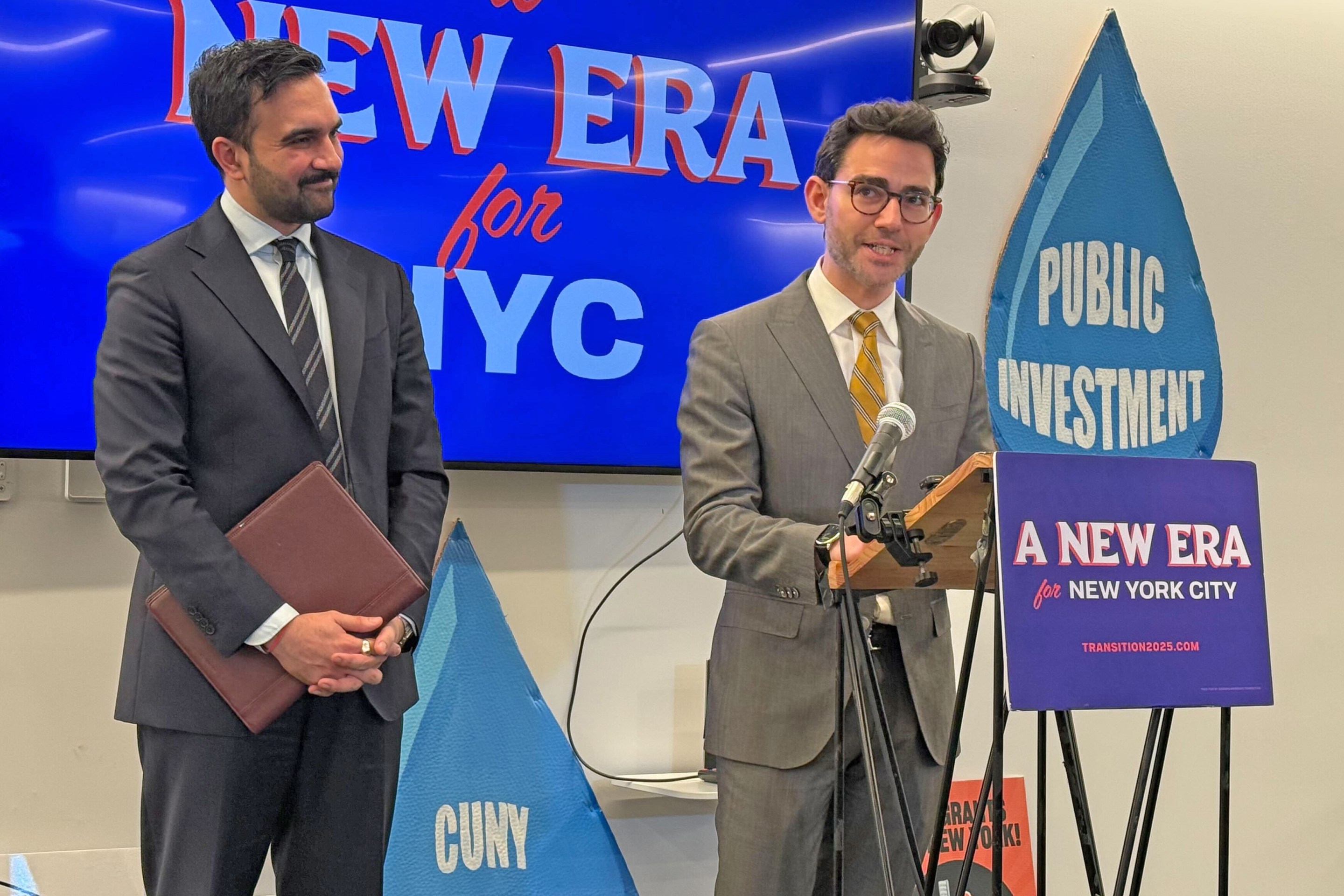One Brooklyn business has seen the future of safe streets and heavy lugging — and it's going to be O-KEI!
Field Form, a landscaping company in Gowanus, has been turning heads on local streets with its small Japanese-made Kei truck — a unicorn of urban transit that has been piquing the interest of urbanists and business owners alike.
The size, cost, and reliability of the old school cab-over-wheels design — as well as some specific local regulations — have made Kei trucks extremely popular in Japan, topping out at 40 percent of new cars sold in 2013. Overseas, Kei trucks are used in agriculture, construction, and even firefighting.
Finally, some New Yorkers are finding ways to take advantage of the truck's range of benefits.
“We weren’t going to spend $50,000 on a new pickup truck,” said Samuel Robinson, the landscaping firm's director. His Kei truck cost less than $10,000 to acquire, and he spends less than $500 a year in maintenance. “As a small business, what more could you ask for?”
Kei trucks are smaller, but they pack as much punch as a bigger pickup truck — while obviously being far safer on the roads — in the same way cargo bikes are also reducing the number of heavy, dangerous trucks on New York City's traffic-clogged streets.
For any local jobs, Robinson can easily transport his equipment in the back of the truck. This can include any combination of plants, rakes, soil, shovels, and even sometimes small trees. It's a dirty job — and a Kei truck can do: its bed is nearly the same size as that of a standard American pickup truck. (Take that, car industry propagandists.)
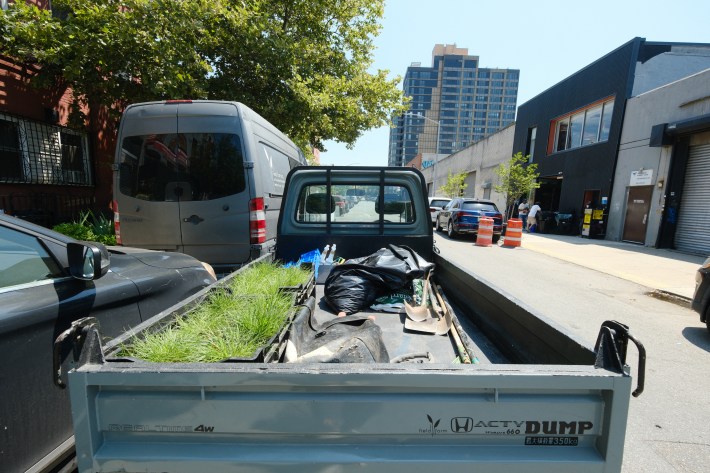
The only difference? “The width of the bed is the width of the entire vehicle, so you don’t have any excess space,” he said.
Hauling AND safety first
Kei trucks also provide numerous safety benefits, despite the common perception that bigger is always better. Built in the 1990s, they are low horsepower so it's nearly impossible to speed. On the other hand, American vehicles are built and tested for highways, encouraging drivers to maintain those speeds on city roads.
New York’s tight and chaotic streets can make driving a nightmare, but in a five-foot-wide Kei truck, navigating double-parked cars is considerably easier.
“It’s more of a human scale,” said Robinson. “You can really see all around the vehicle.”
Kei trucks don't have front hoods, significantly increasing the visibility in front of the truck, reducing the danger to young children.
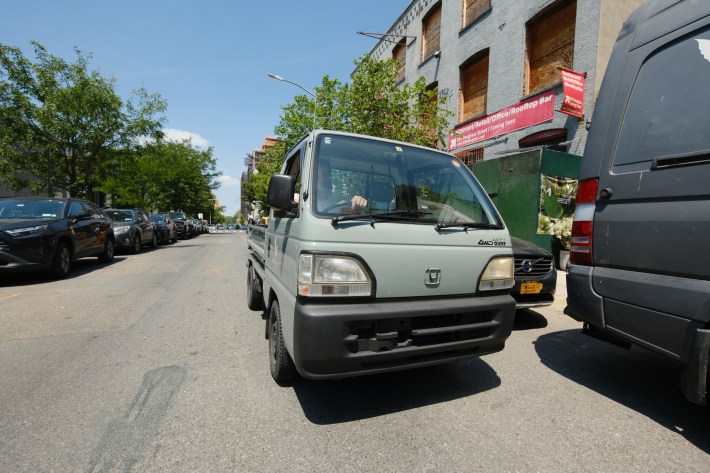
Kei trucks have garnered a small cult following in the U.S., but their widespread adoption has been hampered by an exacting import process and a legal gray area.
Robinson has received dozens of inquiries from people interested in buying a Kei truck for themselves, but he is reluctant to encourage others to embark on what was a six-month process to import and register his truck, which has Montana plates.
Not everyone is sold on Kei trucks. A 2010 letter from the Insurance Institute for Highway Safety recommended states prohibit drivers from registering them on the grounds that they're not safe enough in crashes (caveat: for "occupants"). But rather than limiting Kei trucks, officials should encourage them, advocates say, if only to slow the vehicle size arms race.
At least that's how it played out in Japan. In 1949, the island nation and vehicle manufacturing giant created the “kei-jidōsha,” or “light vehicle,” classification, legalizing them for use on the roads.
They're efficient, sure, but here's one reason why they got popular: Most rural Japanese towns famously require drivers to own parking spaces before buying a car — but Kei trucks are exempt from this regulation.
Kei truck owners also benefit from lower tax and insurance rates, making them an appealing option for young people or the elderly.
As New York City looks to find new solutions to last-mile deliveries, Kei trucks should be on the radar of those looking to minimize the number of large trucks in the city, users and advocates say. Fully recognizing Kei trucks could help to fulfill this goal.
“You’re opening up a lot more space for alternative vehicles like cargo bikes or delivery bikes,” said Robinson. If most pickup truck owners started using Kei trucks, he believes it would take up at least 30 percent less space. “Yeah, there’s just no need for that extra 30 percent in a place like New York.”
Despite popular belief that everything is bigger in Texas, the state is leading the push to legalize Kei Trucks. David McChristian and his advocacy group, Lone Star Kei, successfully lobbied Texas legislators, and now are looking to help other states fight for the right to drive the mini-trucks.
"Motorcycles are obviously less safe than a Kei vehicle," said McChristian, identifying the irony of calling Kei trucks dangerous while allowing two-wheeled super bikes to roam free.
"I'd much rather be hit by a Kei truck than a Ford-F150."
